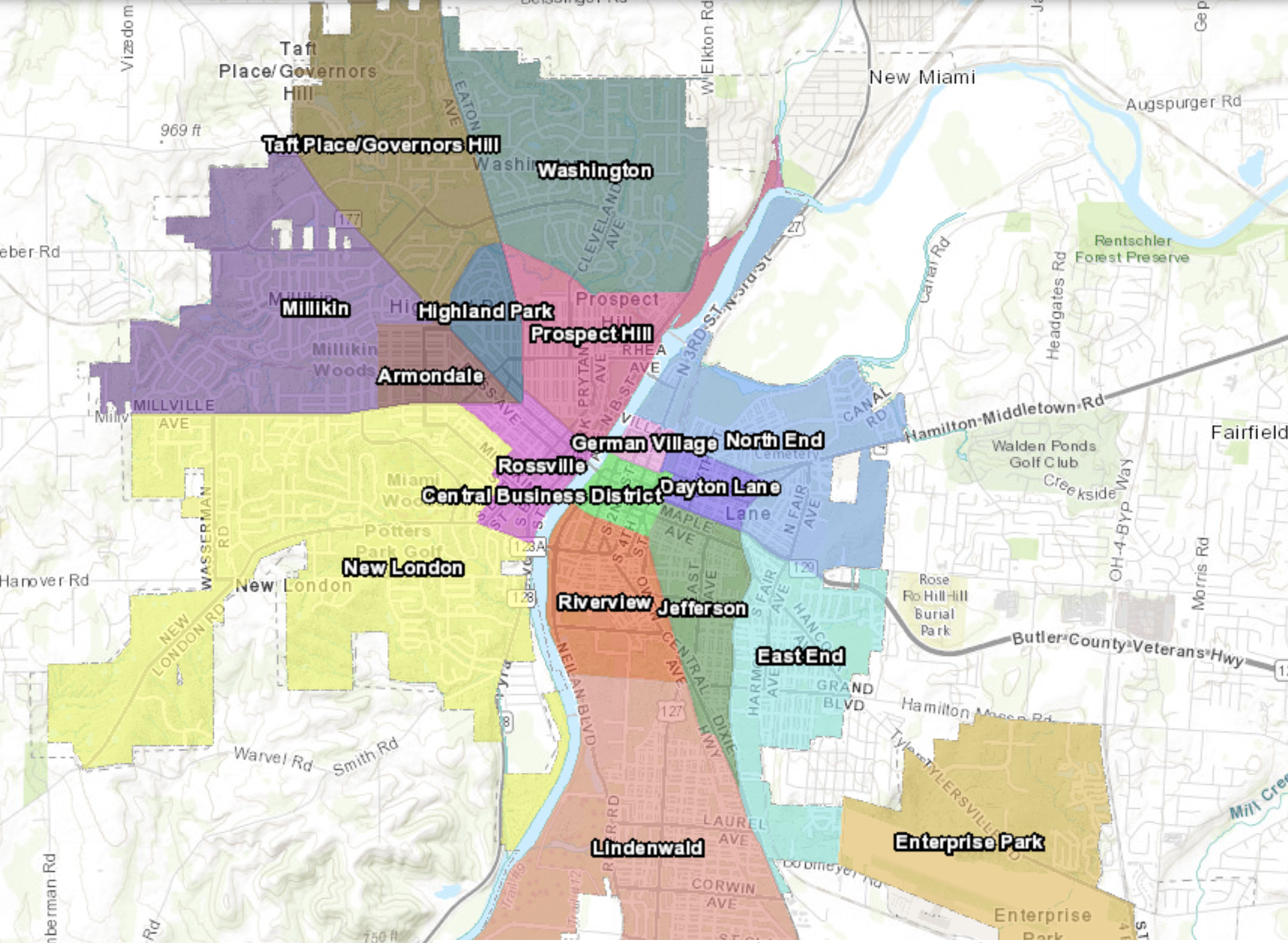17 Neighborhoods Create One Community
17 Strong Advisory Board is a citizen-led effort that provides structure and direction to the efforts behind a celebration of Hamilton’s unique neighborhoods.
Its purpose it to provide a framework for communication and sense of identity to rally individuals, groups, and other organizations to take pride in their particular corner of our city.
In turn, it will create stronger, more identifiable areas throughout Hamilton that will make us better as a whole because neighborhoods are the strategic building blocks of overall community development.

The Historic Districts
Listed on The National Register of Historic Places in 1985, the Dayton-Lane Historic District represented the residential neighborhood of choice for Hamilton’s prominent industrialists at the turn of the last century. The more than 210 homes in this district represent architectural styles such as Queen Anne, Italianate, Second Empire, and Georgian Revival. The Dayton Lane area, lying just east of the many new industries, provided a convenient location for founders and managers of these companies. With the influx of these wealthy industrialists, most of the prominent residences are found on Dayton Street. Campbell Avenue, part of the historic district, was named after Lewis D. Campbell, a major landowner who donated a parcel of land to the city of Hamilton for use as the Campbell Avenue Park.
German Village is a 9-block historic district located immediately north of Hamilton’s central business district and adjacent to the Great Miami River. It has been listed on the National Register of Historic Places since 1991. It was the first residential development outside of Fort Hamilton. Construction in the 1800’s was mostly frame and reflected several different styles of 19th century architecture including Queen Anne, Italianate, Eastlake, Gothic Revival and Greek Revival. The neighborhood housed both prominent businessmen and laborers. By the 1940’s, and the completion of the nearby Hydraulic Canal, a wave of German immigrants had arrived and Hamilton was becoming a prominent industrial center.
Rossville was founded in 1804 as a separate city from Hamilton. It was named after Senator James Ross of Pittsburgh, a friend of George Washington and General Arthur St. Clair. Throughout the 19th century, Rossville was known for its inns, agricultural businesses, breweries, and industry. The town joined Hamilton in 1854, and served as a valuable refuge during the great flood of 1913. The Rossville Historic District was placed on the National Register of Historic Places in 1975. Both sides of Main Street are lined with a variety of 19th century commercial buildings that once contained taverns, lively stables, hatters, meeting halls, drug stores, and grocers. The architecture of the Rossville and Main Street provides excellent examples of all of the major styles of domestic and commercial buildings from the 1830’s through the 1920’s.
